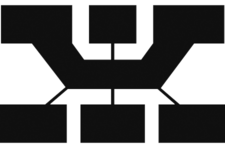Karloff Pro: Beauty and Ugliness Now Converge in Cyrillic

Karloff is one of the most conventional typefaces in our collection, revisiting the history of Didots and English Italian models. At the same time, it is one of our most conceptual projects, investigating the idea of irreconcilable differences and how two extremes can be combined into a coherent whole.
Karloff began with a search for the most beautiful typeface in the history of typography (reflected in Karloff Positive) as well as the ugliest one (captured in Karloff Negative) and for a way to establish a clear connection between disparate extremes. The difference between the attractive and repulsive forms turned out to lie in a single design parameter, the contrast between thick and thin strokes.
The Karloff family also includes a third style (Karloff Neutral, created by interpolating the two extremes. The result is a surprisingly neutral low-contrast version similar to typewriter typefaces of the 20th century.
One particularly interesting aspect of extending Karloff’s language support is the exploration of cultural conventions specific to particular regions. Historically, Latin and Greek typography have differed in their use of contrast, and reversed contrast patterns is widely employed in 18th and 19th century Greek Didot and Bodoni typefaces. Using ‘normal’ contrast to design Greek letterforms can in fact be seen as imposing Latin conventions on a script which preceded them. In its Cyrillic and Greek versions, Karloff questions aesthetic preferences and explores cultural conventions.
Karloff Cyrillic and Greek were designed by Maria Doreuli, who takes a particular interest in reverse-contrast typefaces. Read more about the process of designing Karloff in the essay Beauty and Ugliness in Type design.

